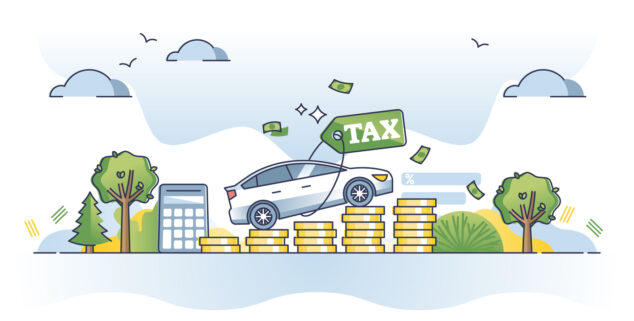Opinion
The effects of a per-mile tax for drivers and state tax revenue
 Image by VectorMine
Image by VectorMineOPINION – When California instituted its electric vehicle (EV) mandate, it had a rather predictable but ignored effect on the state’s tax revenue. In 2022 California had a received just over $7.3 billion in gasoline tax revenue, this is a growth in revenue despite the executive order signed by Governor Gavin Newsom in 2020 which stated, “It shall be a goal of the State that 100 percent of in-state sales of new passenger cars and trucks will be zero-emission by 2035.” As Californians move towards EVs, their Legislative Analyst Office (LAO) has projected about a $5 billion dollar decline in gasoline tax revenue over the next decade. This is a significant oversight to a policy change that should have been identified before implementation.
To offset this loss in tax revenue, LAO suggested one option for reduced spending, one option for funding under a different source, and three options for increasing taxation such as: Increasing existing fuel taxes, increase existing vehicle fees, shift the cost of transportation programs to other funding sources, reduce spending on transportation programs, or implement a road charge (the per-mile tax). California has already increased the fuel tax in July of 2024 by two cents in order to help recover some of the losses. But as more Californian drivers move toward EVs, this tax increase will be less and less effective as the state moves towards its EV goals.
What are the repercussions of a per-mile tax credit? If people try to avoid anything, its taxes. Probably the best example was the Window Tax that was in England in 1696. The logic was that the more windows a house had the better off the family was and could pay more in taxes. So what happened? People began sealing off their windows to avoid the tax. A repercussion was poorer houses had less windows, which leads to less fresh air and sunlight, which caused the poor to have a disproportionate negative effect on their health.
It would follow that people would drive less if they are taxed per mile. This could be in the form of carpooling, use of public transportation, less driving outside of necessary times such as work commutes, etc. Public transportation seems to be, at surface value, the only real means of recouping tax revenue. But as the gasoline tax accounts for over half of the funding for the state’s transportation, will bus tickets really make up for this? Likely not. What will happen to the infrastructure with this loss of funding? Highway maintenance had $5.7 billion in state funding and local streets had $3.4 billion. If we take out $5 Billion, what will the roads and highways look like? What happens to the poor when its harder for them to get to work or the rural farmer having road closures trying to get their goods to market?
If infrastructure is worse, transportation costs increase which increases the cost of everything else. Not to mention there is no money to develop EV infrastructure to support these vehicles when it is impossible to maintain the current infrastructure. The world is moving towards zero emissions naturally and gasoline cars will become things of the past. But this self-imposed artificial deadline will have far more disastrous consequences than benefits. I suggest repealing the executive order and let technology and the economy resume its natural course.
Daniel Spargo has previously worked as an International Economist for the US Department of Agriculture in Washington D.C.
Want to see more stories like this? Sign up for The Roundup, the free daily newsletter about California politics from the editors of Capitol Weekly. Stay up to date on the news you need to know.
Sign up below, then look for a confirmation email in your inbox.

Leave a Reply